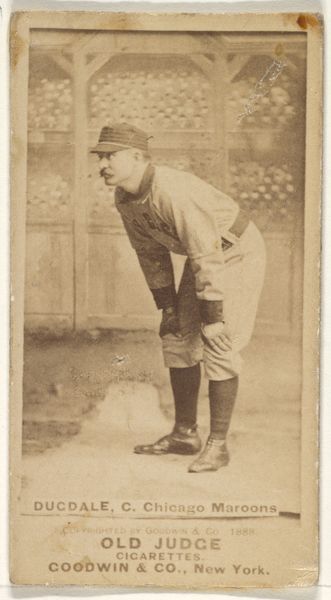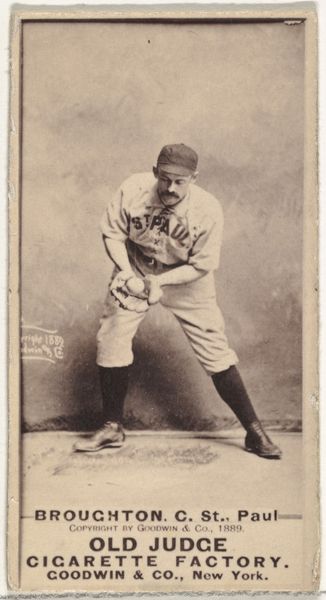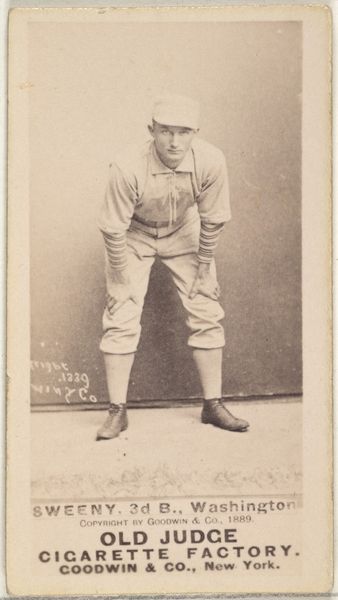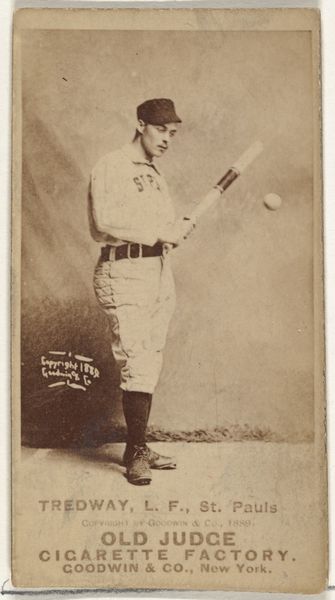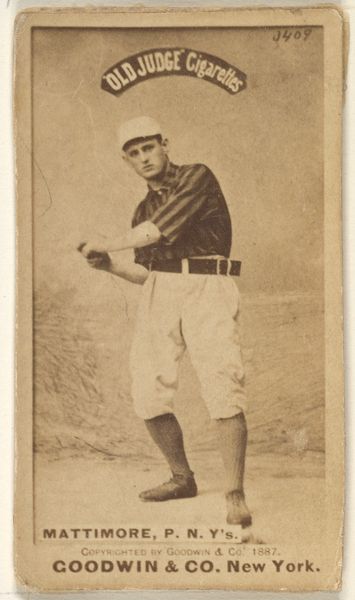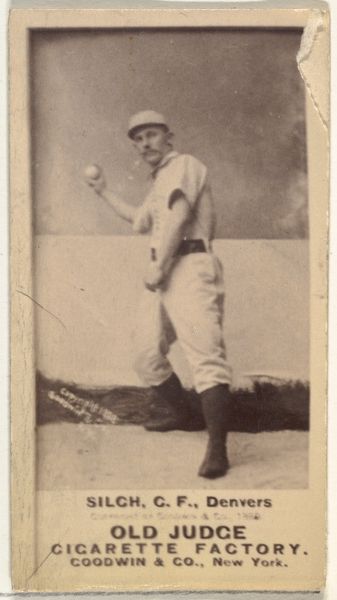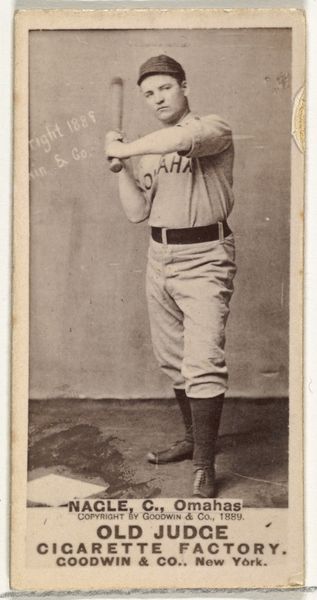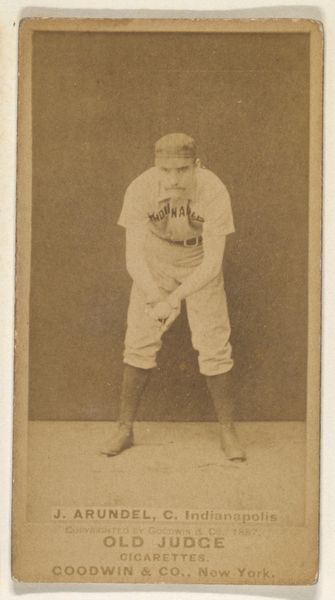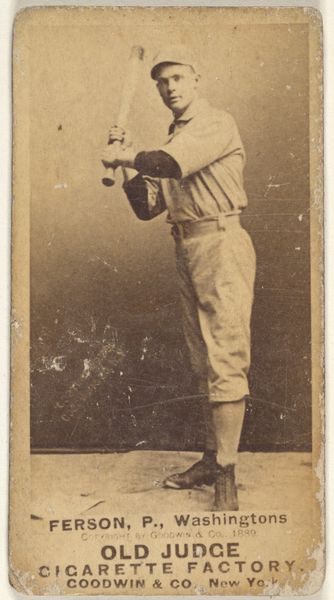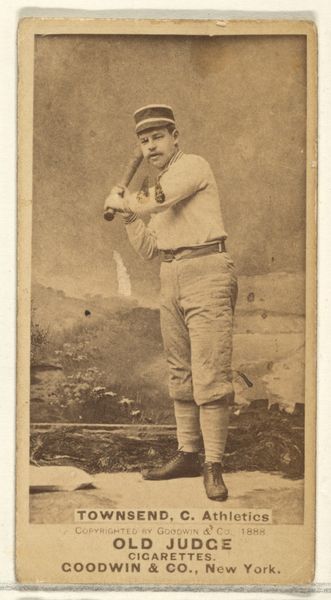
Joseph "Joe" Strauss, 3rd Base, Omaha Omahogs/ Lambs, from the Old Judge series (N172) for Old Judge Cigarettes 1888
0:00
0:00
Dimensions: sheet: 2 11/16 x 1 3/8 in. (6.9 x 3.5 cm)
Copyright: Public Domain
Curator: Let's consider this albumen print from 1888 featuring Joseph "Joe" Strauss, a 3rd baseman for the Omaha Omahogs. It's part of the "Old Judge" series of baseball cards. Editor: Immediately, I’m struck by the tonal range, a near monochromatic sepia. The pose too—squatting, almost submissive—lends a strange vulnerability. Curator: Structurally, observe how the composition relies on a tight framing. The subject fills the limited space, creating an intimacy, almost a confrontation with the viewer. Consider the play of light and shadow on his uniform, revealing the texture. Editor: Yes, but Goodwin & Co. aren’t simply documenting. Cigarette cards promoted an aspirational ideal. Note the somewhat constructed nature. The image links athleticism and idealized manhood, crucial for marketing tobacco to men. Also consider how the players were primarily white, revealing an element of racial exclusivity in this representation. Curator: Yet the formal choices support a certain aesthetic ambition beyond mere marketing. The curve of his gloved hands echoes the arc of his body. The diagonal line of his hat band subtly offsets the vertical format, adding a sense of dynamism. Editor: Certainly. The artistry elevates it beyond basic advertisement. But this form aestheticizes power structures. How does it reflect the rising visibility of professional athletes, especially baseball players, within the cultural landscape of late 19th-century America? These images contributed to the commercialization and idolization of sports figures, shaping notions of masculinity. Curator: A commercial venture certainly, but it also creates a space for studying detail, nuance, and composition in late nineteenth century photography. Note the resolution! Remarkable! Editor: Ultimately, a seemingly straightforward portrait functions as both an advertisement and a carefully constructed cultural artifact, pregnant with ideas about race, masculinity, and commercialism at the dawn of modern American sports. Curator: Indeed, and considering those intricate details certainly lends insight into late nineteenth century aesthetic values. Editor: This intersectional analysis certainly opens exciting areas for further exploration.
Comments
No comments
Be the first to comment and join the conversation on the ultimate creative platform.
